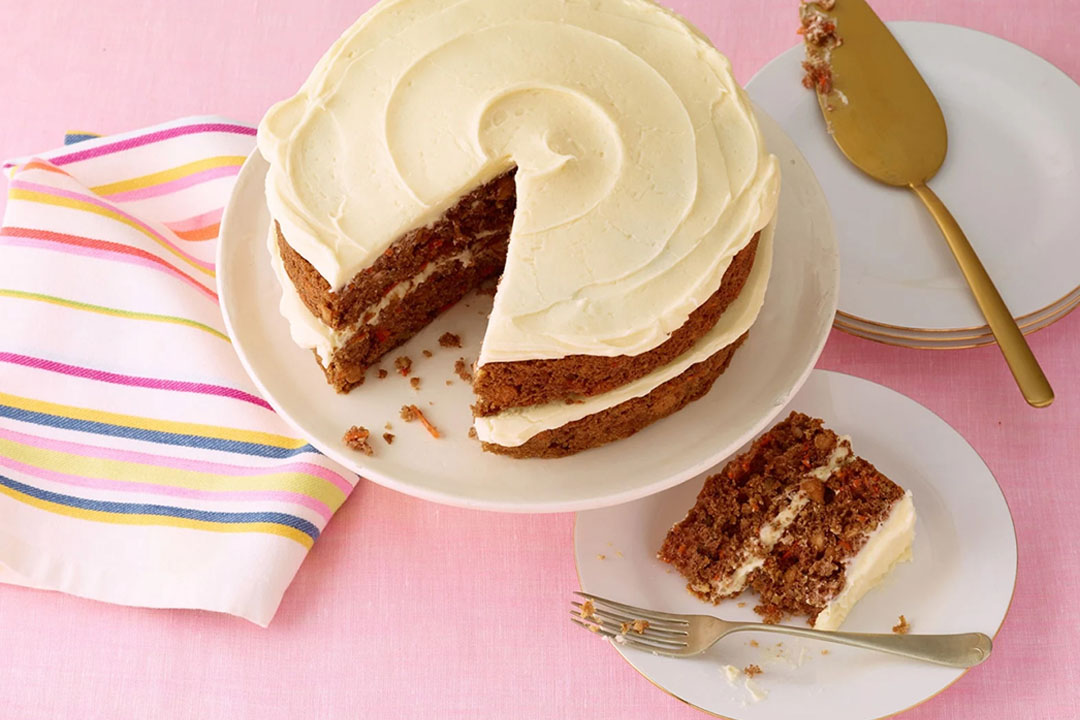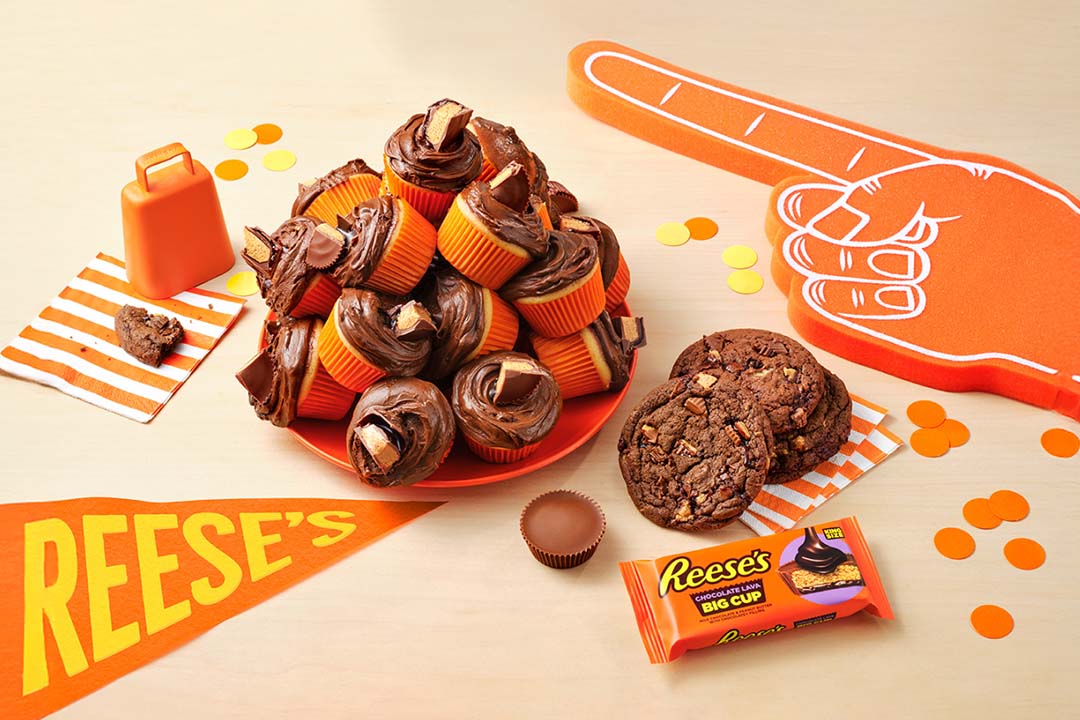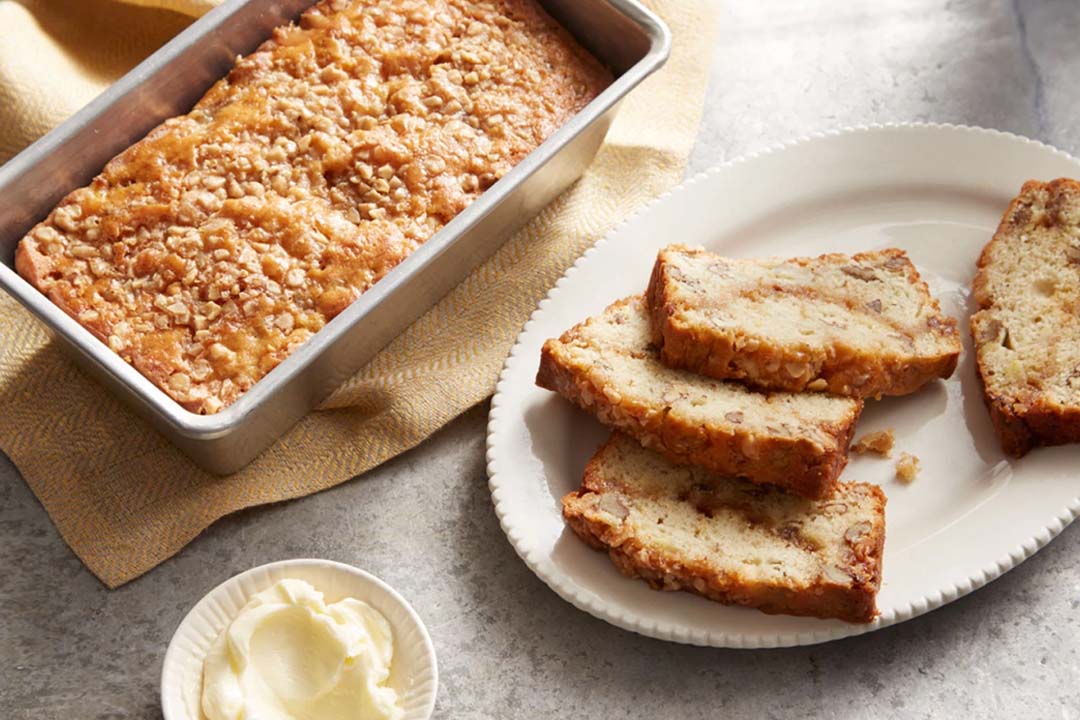Baking with Hershey
We’ve got all the latest tricks, hints and hacks to turn you into the baker you’ve always dreamed of being! Master your favorite desserts and get inspiration for new ones with Hershey.
We’ve got all the latest tricks, hints and hacks to turn you into the baker you’ve always dreamed of being! Master your favorite desserts and get inspiration for new ones with Hershey.
WHAT ARE YOU BAKING?

Warm spices, grated carrots & cream cheese frosting are why carrot cake is so great! Check out the history of the dessert & find your new favorite cake recipe.

Get ready to cheer on your favorite team during March Madness with all of our most delicious game day snacks and desserts made with REESE’S Candies.

Hosting Sunday brunch this weekend? Get inspired to create brunch dessert recipes, ranging from quick and easy to intermediate and impressive.
Our top three flour substitutions are gluten-free flour blends, almond flour and oat flour. Which will you try in your next dessert?
Sign up for our newsletter and get the sweetest updates and inspiration, including a recipe of the month, new Hershey products and more!
Discover the latest recipes to drop on Hersheyland, perfect for indulging in delicious new flavors any time of year! Be the first to bake and leave a review.
Use 1/4 cup of applesauce or mashed banana for each egg in your recipe to maintain the right structure and moisture.
Yes, you can soften butter in the microwave, but make sure it doesn’t melt. Put the stick in and heat for 5 seconds (for high wattage microwave), then turn the stick and do another 5 seconds until soft. You can also try cutting the butter into small pieces, warming for a bit in the microwave then beating with an electric mixer until soft.
It’s best to store your goodies in a tightly sealed container. Cookies, brownies, blondies, bars, cupcakes, cake, breads and muffins don’t require refrigeration. If any of your treats are dairy-based (think cheesecakes, pudding and non-fruit pies) or have frosting or a cream layer, you can keep them in the fridge for about 5 days.
Yes, but it can impact the texture and flavor of your baked goods. Oil is better in muffins and cupcakes because it gives them a softer, more moist texture. However, oil is difficult to substitute for butter in cookies, unless you use a solid oil or butter alternative like margarine.
Your choice of pan depends on what you’re baking, but generally metal pans are best for baking! If you’re whipping up brownies, cookies or cakes, choose metal because it heats more quickly and evenly. Glass, on the other hand, is ideal for general cooking. You can bake in glass, but glass heats up slower and retains heat longer than metal. If you’re someone who likes thick crisp brownie edges, bake in glass. Otherwise stick with metal for baking.
Whole milk is best for baked goods because it will yield the best flavor and texture but 2%, 1% and skim milk can also be used. If you’re looking for a plant-based baking alternative for milk, try coconut milk, oat milk or soy milk. When swapping ingredients, it takes a bit of trial and error to find the right balance!
Yes, it’s always a good idea to grease and flour your pans before baking to prevent sticking and burning. Not sure whether to use cooking spray, butter or shortening? We’ve got the answer. (link to video)
Wait until your dessert is completely cool before spreading your frosting. If your cake is too warm it can melt your frosting and cause it to spread or drip. If you’re pressed for time you can pop your cake into the freezer for 10 minutes to make the frosting easier spread. As an added bonus, the chill time helps it spread more evenly, too!
No, you won’t double the bake time, but you might need to keep your desserts in a little longer to account for the extra pan in the oven. Check for doneness at the original bake time, then keep an eye on it in 3-5 min increments until it’s ready. When using multiple bake pans, make sure one isn’t cooking faster than another or is in a hot spot in your oven. You might want to rotate the pans or switch them to another rack halfway through your bake time.
Baking powder and baking soda are used as leavening agents in baking and cooking. It’s what gives your desserts that fluffy, airy texture. But don’t use them interchangeably in a recipe!
Baking soda is actually three times stronger than baking powder. In a pinch, you could use three teaspoons of baking powder for one teaspoon of baking soda, but it’s best to keep these two baking essentials stocked in your pantry!
Interested in the science behind it? Baking soda is a single reaction leavener while baking powder is a double reaction leavener. Baking soda reacts to moisture which is why it is important to get a batter that only uses baking soda into the oven as quickly as possible. The longer a batter with just baking soda sits the less effective the leavener will be. Baking powder reacts to both moisture and heat so there is less chance of losing effectiveness before being baked.